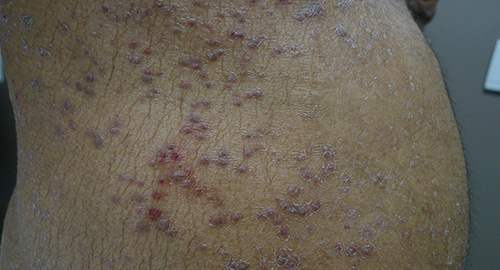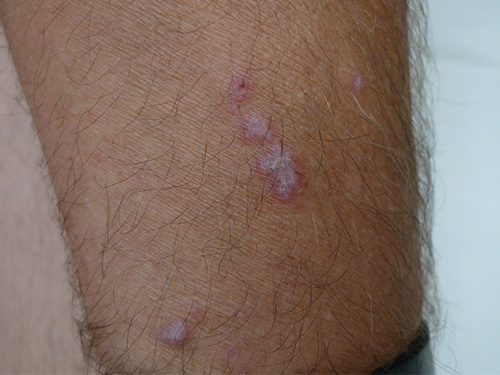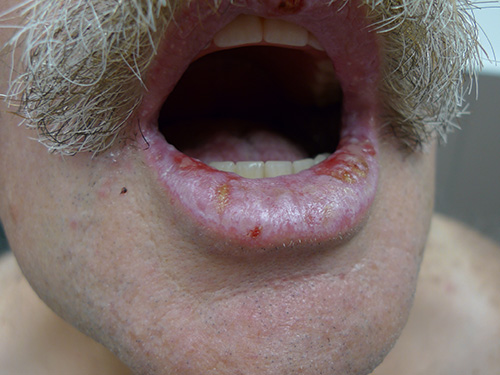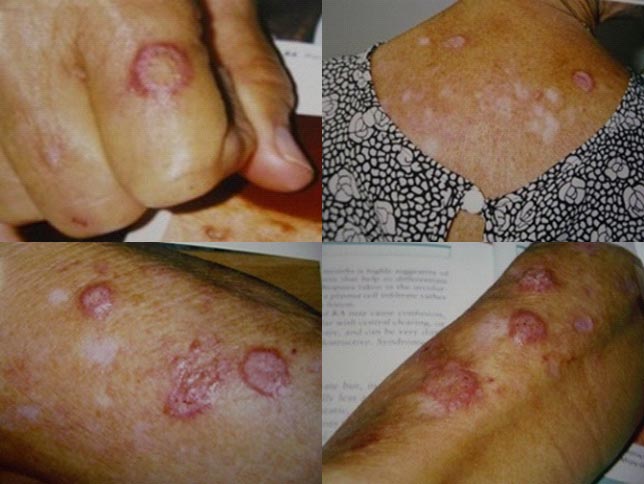Lichen planus
Lichen planus is an uncommon idiopathic inflammatory condition. It can occasionally be triggered by drug ingestion or hepatitis C infection. Lichen planus can affect the skin, hair, nails, and oral and genital mucosae; see here for information on oral lichen planus. The typical skin eruption is itchy, violet, polygonal and has flat-topped papules with lacy white lines. For photos of lichen planus, see here. Lichenoid drug eruptions can resemble lichen planus.

Note: Reproduced with permission from the A-Z of Skin [digital]. Australasian College of Dermatologists. Sydney. https://www.dermcoll.edu.au/

Note: Reproduced with permission from the A-Z of Skin [digital]. Australasian College of Dermatologists. Sydney. https://www.dermcoll.edu.au/

Note: Reproduced with permission from the A-Z of Skin [digital]. Australasian College of Dermatologists. Sydney. https://www.dermcoll.edu.au/

Note: Reproduced with permission from the A-Z of Skin [digital]. Australasian College of Dermatologists. Sydney. https://www.dermcoll.edu.au/
Without treatment, skin lesions usually resolve over 6 to 9 months, with postinflammatory hyperpigmentation fading over 3 to 6 months. A small proportion of lesions can persist, particularly oral and genital lesions.
Diagnosis and treatment of lichen planus in a primary care setting is rare. If lichen planus is suspected, refer the patient for dermatologist advice. Treatment may include topical or oral corticosteroids, phototherapy or acitretin. The aim of treatment is to relieve symptoms and prevent permanent damage to hair and nails. Involvement of nails and hair follicles (lichen planopilaris) may cause permanent atrophy and destruction (eg scarring alopecia).
